Lewis, Edward John (Leading Aircraftman)
Died 1941-June-07
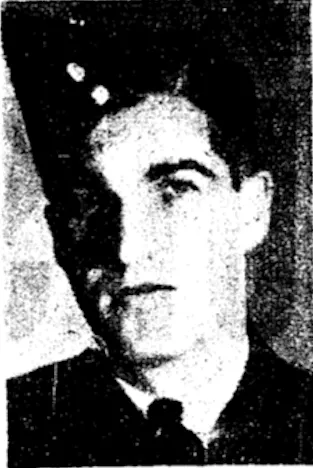

Birth Date: 1916
Born:
Parents: Son of Edward and Maud Lewis, of Toronto, Ontario, Canada.
Spouse:
Home: Toronto, Ontario
Enlistment:
Enlistment Date: unkown date
Service
RCAF
Unit
401 Sqn- Squadron
Mors Celerrima Hostibus Very swift death to the enemy
Base
Rank
Leading Aircraftman
Position
Service Numbers
R/53031
Home
Unit Desciption
401 Sqn Mors Celerrima Hostibus ("Ram")
History of the Squadron before and during World War II (Aircraft: Siskin III, Hurricane I, II, Spitfire Vb, IX, IXb)
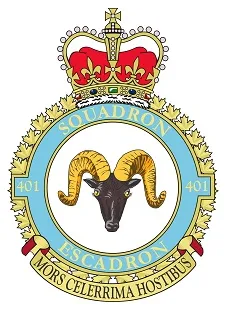
The roots of the squadron go back to No 81 (Canadian) Squadron RAF in 1918. This squadron was authorized as No 1 Squadron CAF around November 20 of that year, and was disbanded on January 28, 1920. It was re-formed at Jericho Beach (Vancouver), BC on 1 April 1925, and flew forestry and fishery patrols with Curtiss HS-2L flying boats, until it was transferred to the non-military Directorate of Civil Government Air Operationson 1 July 1927, and its service designation lapsed. The squadron was re-created at Trenton, ON in 1937 as No 1 (Fighter) Squadron RCAF. At the time it was equipped with Armstrong Whitworth Siskin III biplane fighters. It moved to Calgary in August 1938 and was re-equipped with Hawker Hurricane Mk 1 fighter aircraft in February 1939. On the outbreak of WWII in September 1939 the squadron was mobilized at St Hubert, QC, before moving to Dartmouth, NS in November. It absorbed No 115 (Fighter) Squadron of the Auxiliary in Montreal before moving to Britain in May 1940. After its aircraft had been modified to make them battle-fit at Middle Wallop, Hampshire and Croydon, Surrey, the squadron joined No 11 Group of RAF Fighter Command at Northolt, Middlesex, in August 1940, and saw action in the Battle of Britain, claiming 30 aircraft destroyed, 8 probably destroyed and 34 damaged. In October 1940 the squadron moved to bases in Scotland before moving briefly to No 12 Group Fighter Command in Driffield, Yorkshire. On March 1st, 1941 it was renumbered No 401 (Fighter) Squadron RCAF, at Digby, Lincolnshire, UK ![]() as part of the Canadian Digby Wing of 12 Group. The Squadron code letters were YO.
as part of the Canadian Digby Wing of 12 Group. The Squadron code letters were YO.
In October 1941 the squadron became again part of 11 Group, flying from several bases in Kent, ending up in September 1942 as part of the Canadian Kenley Wing until January 1943. In February 1941 the squadron converted to Hawker Hurricane Mk II aircraft, then in September of 1941 to Supermarine Spitfire Mk Vb. They flew different Marks of Spitfire for the rest of the war. During the period to early 1943, the squadron participated in fighter sweeps over France, and in RAMROD and RHUBARB operations. From January to May 1943 the squadron was rested at Catterick, Yorkshire and then it rejoined the Kenley Wing. In July 1943 Fighter Command was subsumed into the 2nd Tactical Air Force (TAF), and 401 Sqn was part of the No 126 (RCAF) Wing of No 83 Composite Group. Until June 1944 the squadron flew from Redhill, the Advanced Landing Ground at Staplehurst, Kent, Biggin Hill and Tangmere, Sussex where they continued fighter sweep and RAMROD operations. On and after D-Day the squadron patrolled the beachheads, and 12 days after D-Day the squadron moved to France, to No 4 Base at Beny-sur-Mer, Normandy. Thereafter until the cessation of hostilities the squadron’s Spitfires were employed in fighter and ground attack operations, moving from base to base through France, Belgium, the Netherlands and finally into Germany, as the armies moved northwards. The squadron was finally disbanded at Fassberg, Germany
![]() on 10 July 1945.
on 10 July 1945.
The squadron shot down 195 enemy aircraft, which made it the top-scoring squadron of the RCAF, and it was the leading squadron in the 2nd TAF with 112 air and 15 ground victories. It held the record for the most sorties flown (12,087). In October 1944 the unit recorded the first victory in the RAF/RCAF over a Me 262 jet fighter. Among the pilots there were 9 Aces (Squadron Leader W.T. Klersy DFC & Bar, Flight Lieutenant J. MacKay DFC & Bar, Flight Lieutenant D.R. Morrison DFC & DFM, Flying Officer G.D. Cameron DFC, Flying Officer J.P.W. Francis DFC, Flying Officer R.R. Bouskill, Flight Lieutenant G.W. Johnson DFC & Bar, Squadron Leader L.M. Cameron DFC, Flying Officer D.B. Dack). Several pilots also claimed triple victories in a single sortie. Aircrew operational losses were 61 pilots, of whom 6 were killed and 28 presumed dead. Aircrew were awarded 15 DFCs, 4 Bars to DFC and 1 DFM. Battle Honours were:Battle of Britain 1940, Defence of Britain 1940-44, English Channel and North Sea 1942, Fortress Europe 1941-44, Dieppe, France, Germany 1944-45Wikipedia, Kostenuk and Griffin
Maps for Movements of 401 Squadron 1940-45
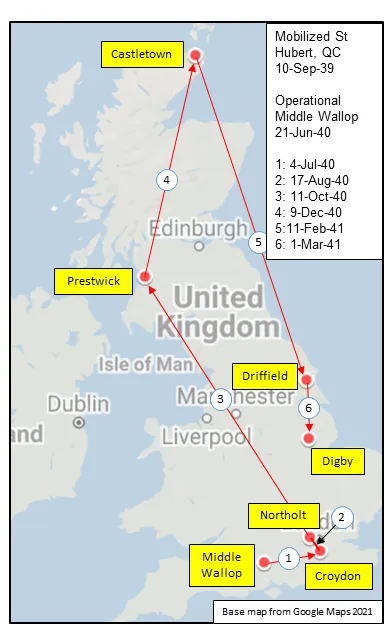
MAP 1: No 1 Squadron RCAF Movements 1940-41 (right-click on image to display enlarged view in new tab)
|

MAP 2: 401 Squadron Movements in UK 1941-44
|
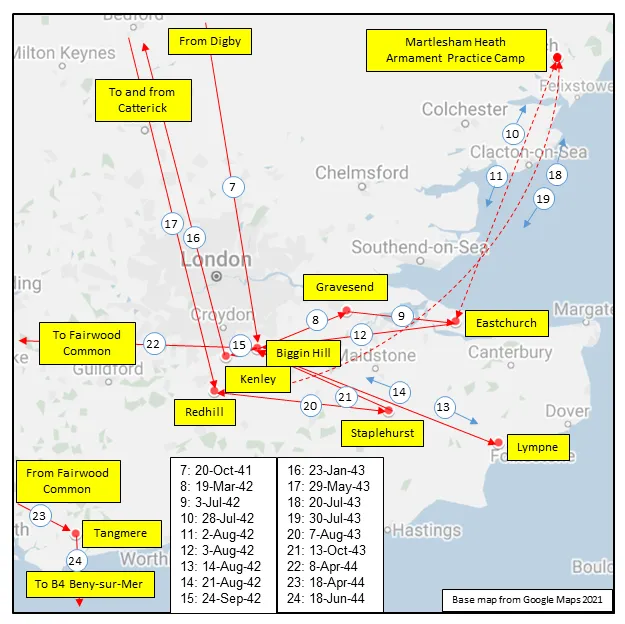
MAP 3: 401 Enlargement Detail of Map 2
|
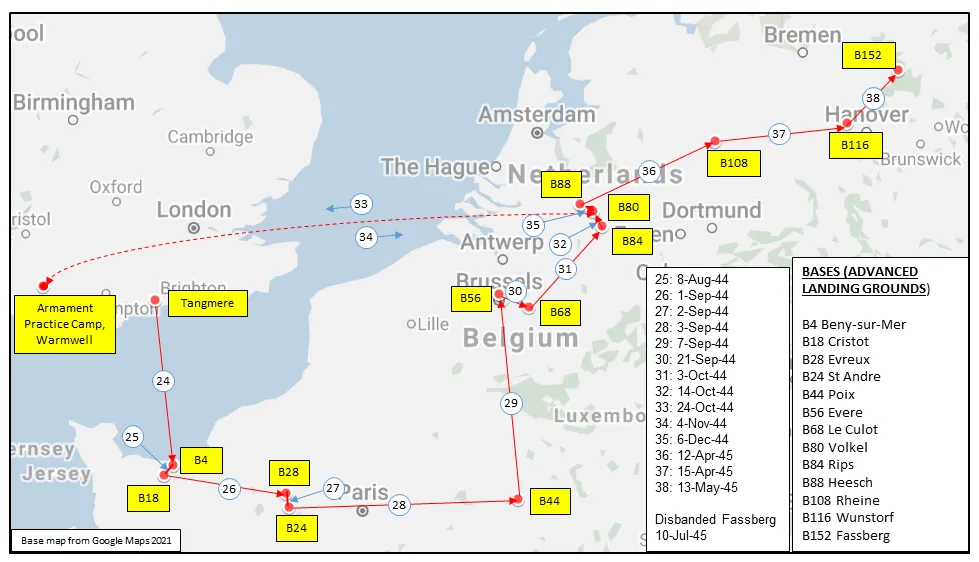
401 Squadron History Summary 1940-45

401 Squadron History Summary 1940-45 Page 2
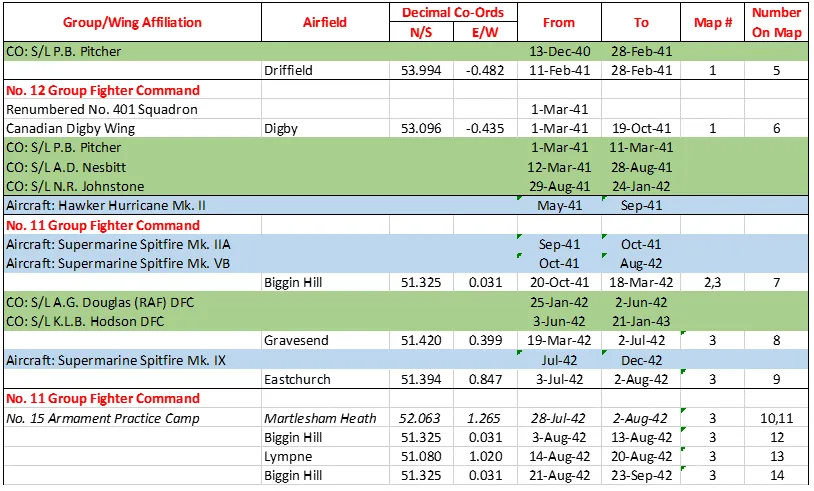
401 Squadron History Summary 1940-45 Page 3
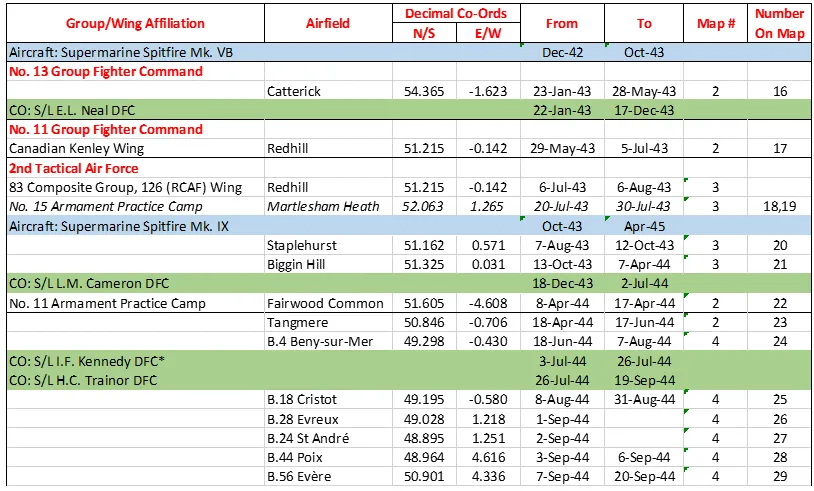
401 Squadron History Summary 1940-45 Page 4
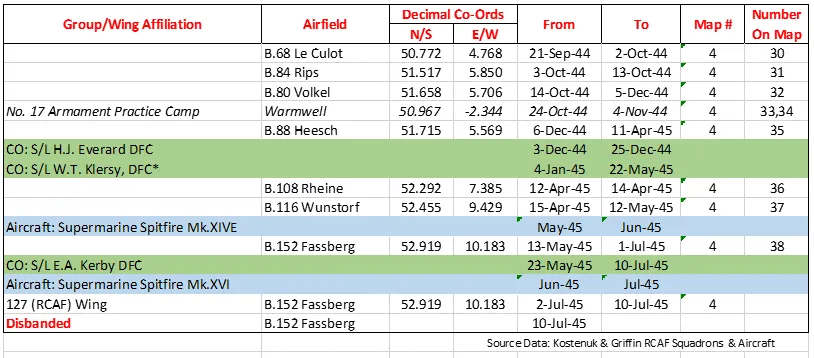
History of the Squadron Post-WWII (Aircraft: Vampire III, Sabre V, Expeditor, Otter, Kiowa, Hornet)
The squadron was reactivated as No 401 (F) Sqn (Aux) on 15 April 1946 at RCAF Station St. Hubert, Quebec ![]() . It was retitled ‘401 "City of Westmount" (F) Sqn (Aux)’ on September 4, 1952. The squadron flew de Havilland Vampire Mk. III and Canadair Sabre Mk. 5 aircraft in a fighter role until October 1958 when it was reassigned to a light transport and emergency rescue role, was re-designated '401 Squadron "City of Westmount" Sqn (Aux)' on November 1, 1958 and re-equipped with Beechcraft Expeditor and de Havilland Otter aircraft. The squadron was awarded a Squadron Standard on 5 May 1962. It was integrated into the Canadian Armed Forces as No 401 “City of Westmount†Air Reserve Squadron in January 1969. It was again re-designated '401 Helicopter Operational Training Squadron' on October 22, 1991. Flying the CH-136 Kiowa helicopter out of St. Hubert, Quebec. 401 Squadron was disbanded on June 23, 1996, after 55 years of operation.
. It was retitled ‘401 "City of Westmount" (F) Sqn (Aux)’ on September 4, 1952. The squadron flew de Havilland Vampire Mk. III and Canadair Sabre Mk. 5 aircraft in a fighter role until October 1958 when it was reassigned to a light transport and emergency rescue role, was re-designated '401 Squadron "City of Westmount" Sqn (Aux)' on November 1, 1958 and re-equipped with Beechcraft Expeditor and de Havilland Otter aircraft. The squadron was awarded a Squadron Standard on 5 May 1962. It was integrated into the Canadian Armed Forces as No 401 “City of Westmount†Air Reserve Squadron in January 1969. It was again re-designated '401 Helicopter Operational Training Squadron' on October 22, 1991. Flying the CH-136 Kiowa helicopter out of St. Hubert, Quebec. 401 Squadron was disbanded on June 23, 1996, after 55 years of operation.
The unit was reactivated as 401 Tactical Fighter Squadron on June 30, 2015, incorporating personnel from No 409 Tactical Fighter Squadron, flying the CF-18 Hornet aircraft. It celebrated its 100th Anniversary in 2018. Its first deployment was to Kuwait for offensive operations during Operation Impact, which is part of the Canadian Government’s approach to the Middle East. The reformed 401 Squadron complements the duties of 409 Tac F Sqn and, assisted by 410 Tactical Fighter (Operational Training) Squadron, deploys tactical fighter forces to meet Canadian and allied defence needs. It is based at Cold Lake, Alberta ![]() as part of RCAF 4 Wing. Under the umbrella of the NORAD mission, fighter crews are on stand-by 24/7 ready to respond to any aerospace threat.
as part of RCAF 4 Wing. Under the umbrella of the NORAD mission, fighter crews are on stand-by 24/7 ready to respond to any aerospace threat.